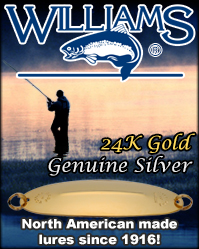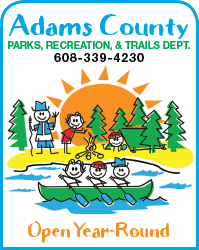Carp removal efforts part of spring fisheries management in Wisconsin
http://dnr.wi.gov/news/releases/article/?id=3942
[EDITOR’S ADVISORY: A video and photos accompany this news release on the DNR website.]
MADISON, Wis. - In much of Europe, carp are revered as table fare, gracing the menus for Easter and Christmas feasts.
Here, not so much.
While commercial demand exists in the U.S. and some Wisconsin carp find their way to East Coast fish markets, most of the local attention is focused on managing carp numbers to support water quality, improve habitat and maintain healthy fisheries. Kurt Welke, a Wisconsin Department of Natural Resources fisheries biologist, said managing carp populations often requires a multi-year commitment by natural resources managers, local governments and private groups such as lake associations.
"Carp reproduce in large numbers and when there aren't enough panfish or other species to consume carp eggs, they will dominate a fishery," Welke said. "Worse, their bottom feeding habits stir up sediment and re-suspend phosphorus in the water, leading to unhealthy algae blooms and reducing sunlight needed for native vegetation to grow.
Such was the case at Indian Lake, a 66-acre lake that was once a very popular, family-oriented fishery and a gem within the Dane County park system. The culprits are common carp, which were imported into the U.S. by Europeans in the mid-1800s, rather than the Asian silver or bighead carp that fortunately still remain out of most Wisconsin waters.
"Fifteen years ago, Indian Lake enjoyed a great reputation as a place to catch nice bass and nice bluegills," Welke said. "Several years ago, a winter kill eliminated many of the bluegills and other egg predators that had kept the common carp numbers in control. In spring, the carp came in from Halfway Prairie Creek during a high water event and they quickly filled the gap. With no competitors, their numbers took off."
The result was an unsavory combination of reduced water quality with algae blooms that diminished the area's recreation potential. DNR and Dane County officials stepped in with a chemical application called rotenone that killed many of the carp during the winter of 2015. However, some survived to produce a year class of young that have been the target of this spring's removal efforts.
Following fisheries survey work, the DNR south central fisheries team and Dane County Land Conservation Division staff determined netting to be the next option. As on many other Wisconsin lakes in spring, a commercial contractor with specialized nets and equipment was hired to help execute the project. Dane County paid for the removal as part of its commitment to improving water quality.
A late spring 2016 electrofishing survey also will be conducted to determine whether additional measures are needed to re-establish the sport fishery and control carp.
"Through this effort, we're trying to promote the fish we want to see in the lake - the native panfish, bass and northern pike," said Mike Rennicke, DNR fisheries technician. During the carp netting, Rennicke and other DNR crew members worked to carefully remove the hundreds of northern pike caught in the nets along with 971 pounds of carp.
Some lakes such as Kegonsa require periodic commercial netting to help support water quality and maintain a sound recreational fishery. Laura Stremick-Thompson, a DNR fisheries biologist covering Dodge and Jefferson counties, sees large-scale removal efforts on large impounded waters in her area, including the removal of 1.4 million pounds of carp from Beaver Dam Lake in Dodge County in 2014.
With carp populations that can reach more than 300 pounds per acre, removal can be beneficial to the lake ecosystem, Stremick-Thompson said. The result has been better water clarity, reduced algae blooms and much improved perch and panfish populations. Carp and buffalo from the Beaver Dam removal efforts have made their way to New York's famed Fulton Fish Market.
Welke said the carp removed from Indian Lake weren't large enough to merit a trip to the East Coast. Instead, they will find use as fertilizer in area farm fields. While it's likely that this spring's removal efforts won't get all the carp out, it is another step forward in ongoing efforts to restore habitat and provide fishable, swimmable waters.
"After the initial reduction in numbers through the rotenone treatment, we have been seeing some of the vegetation planted by the county and the Friends of Indian Lake take hold," Welke said. "This year's netting effort is another step forward. It also proved that we have a very strong northern pike fishery developing in the lake, so these are all positive signs we hope to build on."
This year, Wisconsin's inland fishing season opens on Saturday, May 7. To buy a license, visit GoWild.wi.gov. To learn more about Wisconsin's world class fishing opportunities and fisheries management efforts, visit the DNR website, dnr.wi.gov, and search "Fishing Wisconsin." Current fishing regulations can be found by visiting and searching "Fishing Regulations."












